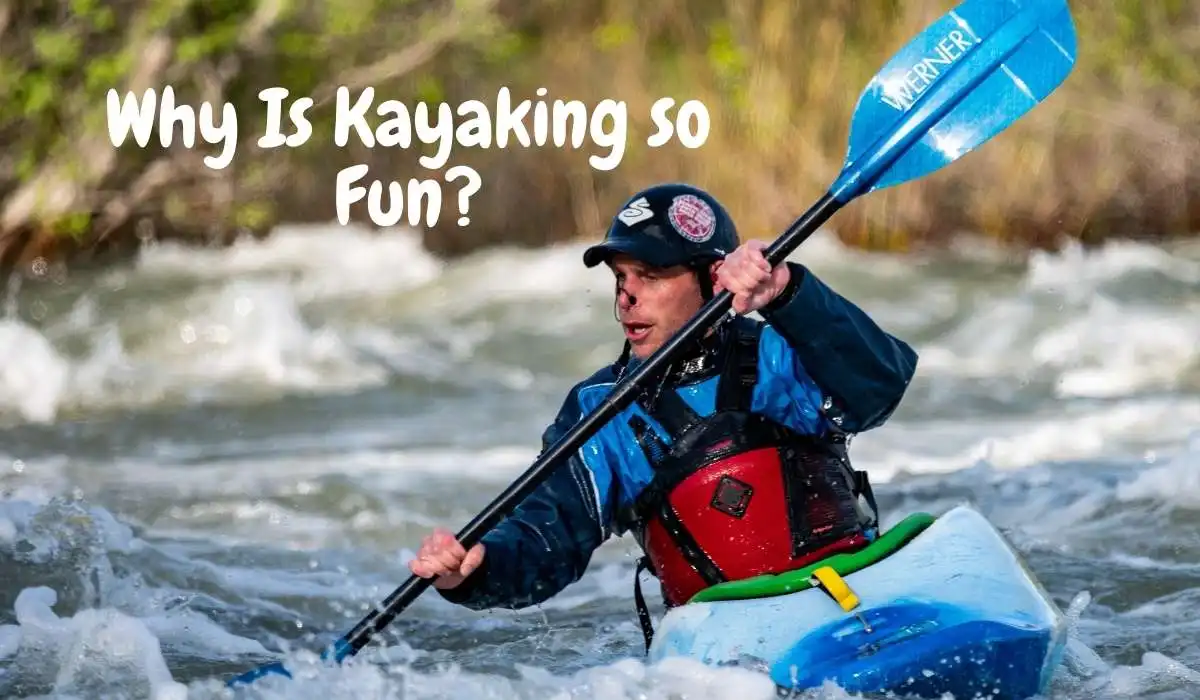Category: Paddle On
-

Why Is Kayaking so Fun?
Kayaking is fun because it challenges your body and mind. You use muscles, build strength, and test your endurance. It offers a cool way to connect with nature, away from hustle and bustle. You get peace in tranquil waters surrounded by wildlife. There’s a thrilling sense of adventure exploring new waters and landscapes. Achieving your
-

Is Kayaking Safe for Non Swimmers
Yes! Kayaking can be safe for non-swimmers if you wear a Personal Floatation Device (PFD). Start in shallow water to build confidence. Use stable Sit-on-Top kayaks with wide cockpits. Consider guided tours for safety. Learn basic skills and be mindful of water conditions. By following precautions and getting proper instruction, you can have a secure
-

What Do You Do When Kayaking?
When kayaking, you equip yourself with essential gear like a life jacket and paddle. Launch your kayak by seeking calm waters, sitting in your cockpit, and using proper paddling techniques. Prioritize safety with a Coastguard-approved PFD, be mindful of water conditions, and inform someone of your plans. Maneuver through obstacles by using sweep strokes and
-

Is Kayaking for Everyone?
Kayaking is accessible for all! Sit-on-top kayaks cater to hip/knee issues. Specially designed kayaks help those with mobility challenges. Tandem kayaks suit groups with disabilities. Kayaking strengthens muscles, boosts endurance, and enhances mental well-being. Safety gear like life jackets is essential. Kayaking’s beginner-friendly nature and diverse designs welcome everyone. Environmental impact is minimal. If you
-

What Is the 50 90 Rule Kayaking?
Master the 50/90 Rule in kayaking for swift progress. It helps predict tidal stream speed changes, essential for safety. Speed increases to 50% by the first hour, then 90% by the second, peaking at the third. Understand this rule for efficient route planning and smooth navigation. Adjust your paddling speed according to current changes. Keep
-

What Is the 120 Rule for Kayaking?
Follow the 120 Rule for kayaking to stay safe and cozy in cold waters. Wear a wetsuit or drysuit as per the rule to guard against hypothermia and boost your kayaking joy. Taking care of your attire is essential for your comfort and well-being on the water. Remember, your safety and enjoyment depend on appropriate
-

Do You Push or Pull Kayaking?
When kayaking, you mainly push with a 70% effort forward and pull with 30% back, using core strength and rotation for effective strokes. Engage your torso for power and momentum through efficient strokes. Remember to position your blade correctly for stability and control. Proper technique in ocean conditions involves utilizing leg and core muscles efficiently.
-

How Many Strokes Are There in Kayaking?
In kayaking, there are various strokes to master: forward, sweep, draw, reverse, and J stroke. Each stroke serves a different purpose to help you navigate through the water efficiently. Start by perfecting these fundamental techniques to enhance your maneuvering skills and guarantee a safe and enjoyable kayaking experience. By understanding and practicing these strokes, you’ll
-

What Is the Rule of 12THS Kayaking?
Understanding the Rule of Twelfths helps you forecast tidal changes accurately while kayaking. By dividing the tidal range into 12 parts, you can anticipate water level shifts and navigate with confidence. Recognize the strength of tidal currents to make informed decisions for a safe adventure. Applying this rule enhances your ability to estimate current speed
-

Can 3 People Sit in a Kayak?
Yes, three people can sit in a kayak, depending on the type and weight capacity. Make sure the kayak can accommodate the extra weight for safety. If you want to know more about the different types of kayaks for multiple passengers and factors affecting kayak capacity, keep exploring. Key Takeaways Types of Kayaks for Multiple
